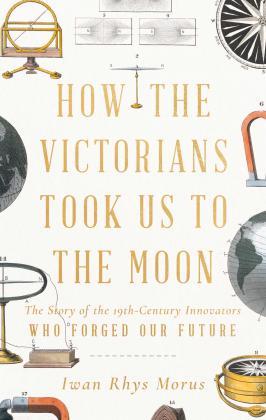
| Format | Hardcover |
| Publication Date | 12/06/22 |
| ISBN | 9781639362608 |
| Trim Size / Pages | 6 x 9 in / 400 |
The rich and fascinating history of the scientific revolution of the Victorian Era, leading to transformative advances in the twentieth and twenty-first centuries.
The Victorians invented the idea of the future. They saw it as an undiscovered country, one ripe for exploration and colonization. And to get us there, they created a new way of ordering and transforming nature, built on grand designs and the mass-mobilization of the resources of the British Empire.
With their expert culture of accuracy and precision, they created telegraphs and telephones, electric trams and railways, built machines that could think, and devised engines that could reach for the skies. When Cyrus Field’s audacious plan to lay a telegraph cable across the Atlantic finally succeeded in 1866, it showed how science, properly disciplined, could make new worlds. As crowds flocked to the Great Exhibition of 1851 and the exhibitions its success inaugurated, they came to see the future made fact—to see the future being built before their eyes.
In this rich and absorbing book, a distinguished historian of science tells the story of how this future was made. From Charles Babbage’s dream of mechanizing mathematics to Isambard Kingdom Brunel’s tunnel beneath the Thames to George’s Cayley’s fantasies of powered flight and Nikola Tesla’s visions of an electrical world, it is a story of towering personalities, clashing ambitions, furious rivalries and conflicting cultures—a rich tapestry of remarkable lives that transformed the world beyond recognition and ultimately took mankind to the Moon.
Iwan Rhys Morus holds PhDs in the history and philosophy of science from the University of Cambridge. He has spent much of his career working on the history of science during the nineteenth century, including the development of new electrical technologies, the popular culture of science, and the history of ideas about the relationship of electricity and the human body. Iran has authored or edited ten books published in Britain, and he is a regular contributor to BBC Radio 4’s "In our Time” and "Great Lives.” He lives in Wales.
Buy it now in print: Amazon Barnes & Noble IndieBound
Buy it now in ebook: Amazon Barnes & Noble Apple Kobo
“This thematic summary of the influence of Victorian innovation goes beyond the well-known names. Recommended for history of science audiences.”
-Library Journal
Praise for Iwan Rhys Morus:
"A real landmark. Finally, two first-rate academic historians--one a specialist in biological and earth sciences, one in physical sciences—both firmly committed to sociological, contextual approaches, offer an overview of their discipline.” Times Higher Education
"An accessible, well-written book, with many nuanced and fascinating stories of individual sciences and the communities of science. An ambitious and successful introduction to the history of science.” International Studies in the Philosophy of Science
"Attractively illustrated and easy to use, the book explains difficult scientific and philosophical issues in brief and often surprisingly clear terms. The field of history of science has been calling out for a book just like this one.” Science
"This delightfully written book traces the evolution of the subject. The book is informative, well structured and a joy to read. It ought to appeal not only to the relatively narrow audience of science historians, but to working physicists and to the general public.” Contemporary Physics
"A masterfully written historical analysis. The book, which fills most admirably a huge gap in the secondary literature, is a 'must read' for undergraduates. I also highly recommend it to historians of science and technology; to general historians, and to scientists, for the sense it provides of the importance of sociocultural context to scientific content.” American Scientist
"Morus's excellent history of physics in the nineteenth century, When Physics Became King, considers the field in an age when physics and physicists came to play a prominent role in the culture. A few good histories of physics exist—but none as readable or comprehensive as Morus's superb book.” Physics Today